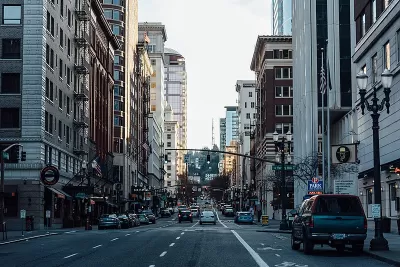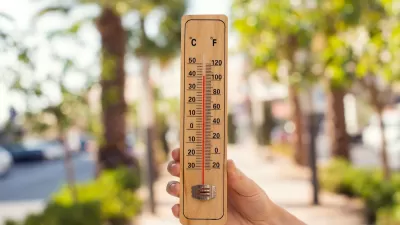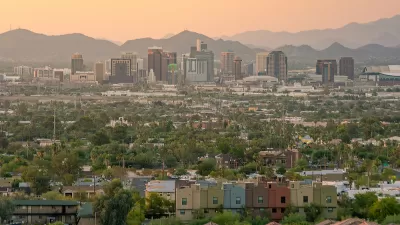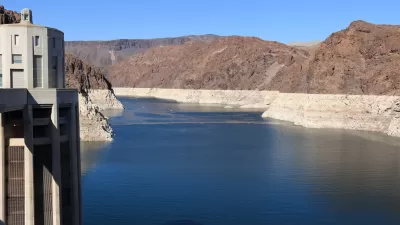The recent heat wave in the Pacific Northwest highlighted how historical inequities still affect the health and well-being of low-income and marginalized communities.

On the heels of the extreme heat waves that enveloped much of the Pacific Northwest this month, Yessenia Funes calls attention to the relationship between historic redlining and vulnerability to extreme temperatures, arguing that "the legacy of segregation across the U.S. exposes some neighborhoods more to this dangerous heat than others." Redlining, which for decades prevented Black families and other people of color from accessing home loans in affordable areas, continues to shape urban neighborhoods today. "The effects from this racist practice still linger—specifically (but not exclusively) through heat disparities."
"We don’t all experience heat the same," Funes writes. "There are unhoused people who are left exposed to the elements. There are incarcerated people stuck in hot cells who can’t advocate for themselves. And there are entire neighborhoods that grow hotter than others when temperatures rise." A study published in Climate "found that formerly redlined communities see, on average, a temperature increase of 4.7 degrees Fahrenheit (2.6 degrees Celsius) above non-redlined neighborhoods," due in part to tree canopy inequity and urban design choices. "Large roadways and buildings made of asphalt and concrete trap and emit heat," making parks and green spaces an important contributor to public health and a healthy environment. "[A]dd on top of that longer and stronger heat waves brought on by climate change, so it’s kind of a double whammy for a compounding inequity that is brought on by a global phenomenon amplifying a local phenomenon," says Jeremy Hoffman, the main author of the study and chief scientist at the Science Museum of Virginia.
Additionally, "[t]he people in neighborhoods who experience higher temperatures are often the same people suffering from food deserts, diabetes, asthma, air pollution, and housing vulnerability." And while local activists are working to create more green spaces and fight inequities in housing and public health, these organizations "really need the partnership of decision makers to enact policies that are in response to the ideas that we have." As climate change creates more dangerous weather conditions and extreme heat waves, the ability to stay cool must be addressed as a public health issue.
FULL STORY: ‘Patterns of Discrimination’: How Redlining Fueled the Heat Wave

Study: Maui’s Plan to Convert Vacation Rentals to Long-Term Housing Could Cause Nearly $1 Billion Economic Loss
The plan would reduce visitor accommodation by 25,% resulting in 1,900 jobs lost.

North Texas Transit Leaders Tout Benefits of TOD for Growing Region
At a summit focused on transit-oriented development, policymakers discussed how North Texas’ expanded light rail system can serve as a tool for economic growth.

Why Should We Subsidize Public Transportation?
Many public transit agencies face financial stress due to rising costs, declining fare revenue, and declining subsidies. Transit advocates must provide a strong business case for increasing public transit funding.

How to Make US Trains Faster
Changes to boarding platforms and a switch to electric trains could improve U.S. passenger rail service without the added cost of high-speed rail.

Columbia’s Revitalized ‘Loop’ Is a Hub for Local Entrepreneurs
A focus on small businesses is helping a commercial corridor in Columbia, Missouri thrive.

Invasive Insect Threatens Minnesota’s Ash Forests
The Emerald Ash Borer is a rapidly spreading invasive pest threatening Minnesota’s ash trees, and homeowners are encouraged to plant diverse replacement species, avoid moving ash firewood, and monitor for signs of infestation.
Urban Design for Planners 1: Software Tools
This six-course series explores essential urban design concepts using open source software and equips planners with the tools they need to participate fully in the urban design process.
Planning for Universal Design
Learn the tools for implementing Universal Design in planning regulations.
Ascent Environmental
Borough of Carlisle
Institute for Housing and Urban Development Studies (IHS)
City of Grandview
Harvard GSD Executive Education
Toledo-Lucas County Plan Commissions
Salt Lake City
NYU Wagner Graduate School of Public Service





























